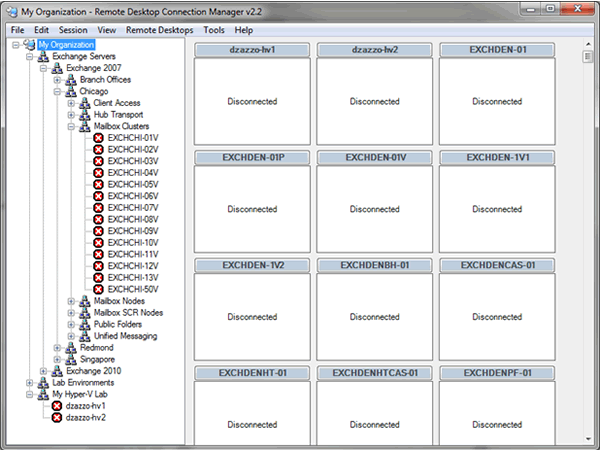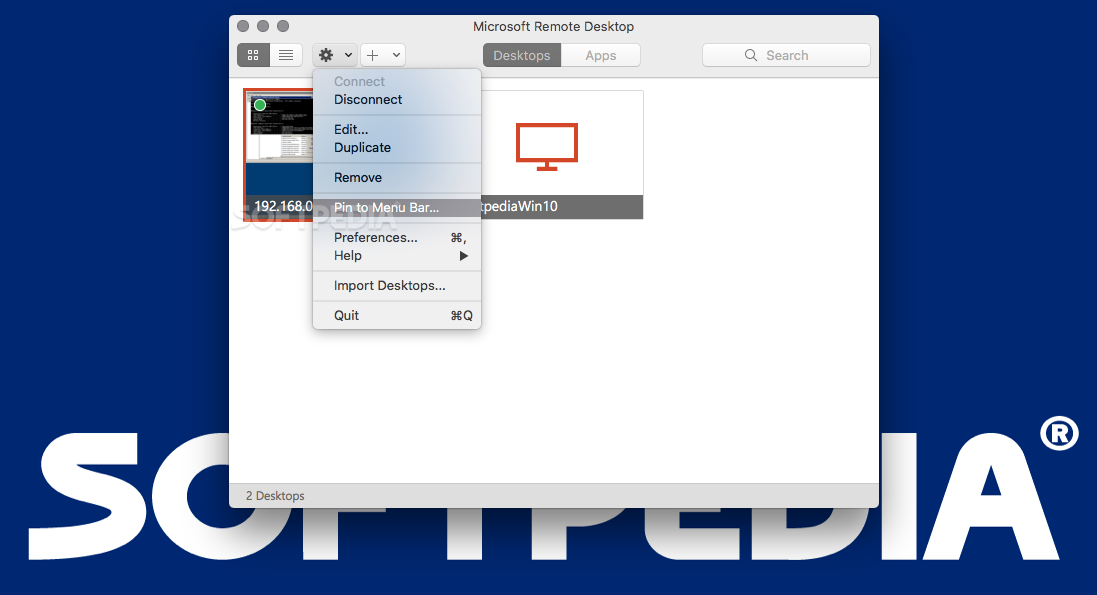Purpose
Windows Server 2012 R2, Windows Server 2012, Windows Server 2008 R2, or Windows Server 2008 with Remote Desktop Services (formerly known as Terminal Services) allow a server to host multiple, simultaneous client sessions. Remote Desktop uses Remote Desktop Services technology to allow a single session to run remotely. A user can connect to a Remote Desktop Session Host (RD Session Host) server (formerly known as a terminal server) by using Remote Desktop Connection (RDC) client software. The Remote Desktop Web Connection extends Remote Desktop Services technology to the web.

Note
Nearly perfect I have a specific usage case - I work in a multiplatform environment in which I work on the Mac and on the PC. I don't want to keep changing physical keyboards, so despite the fact that the two physical machines are next to eachother beneath my desk, I use remote desktop to view and operate the PC while working on the Mac. Mar 05, 2020 March 5, 2020. ConExpo-Con/Agg 2020 In Las Vegas Mar 10-13 / Booth#C30053 in the Central Hall.
This topic is for software developers. If you are looking for user information for Remote Desktop connections, See Remote Desktop Connection: frequently asked questions.
Where applicable
A Remote Desktop Connection (RDC) client can exist in a variety of forms. Thin-client hardware devices that run an embedded Windows-based operating system can run the RDC client software to connect to an RD Session Host server. Windows-, Macintosh-, or UNIX-based computers can run RDC client software to connect to an RD Session Host server to display Windows-based applications. This combination of RDC clients provides access to Windows-based applications from virtually any operating system.
Developer audience
Developers who use Remote Desktop Services should be familiar with the C and C++ programming languages and the Windows-based programming environment. Familiarity with client/server architecture is required. The Remote Desktop Web Connection includes scriptable interfaces to create and deploy scriptable virtual channels within Remote Desktop Services web applications.
Run-time requirements
Applications that use Remote Desktop Services require Windows Server 2012 R2, Windows 8.1, Windows Server 2012, Windows 8, Windows Server 2008 R2, Windows 7, Windows Server 2008, or Windows Vista. To use Remote Desktop Web Connection functionality, the Remote Desktop Services client application requires Internet Explorer and a connection to the World Wide Web. For information about run-time requirements for a particular programming element, see the Requirements section of the reference page for that element.
In this section
Describes how to use the Remote Desktop ActiveX control.
You use the Remote Desktop Protocol Provider API to create a protocol to provide communication between the Remote Desktop Services service and multiple clients.
Virtual channels are software extensions that can be used to add functional enhancements to a Remote Desktop Services application.

The RemoteFX Media Redirection API is used in a Remote Desktop session to identify areas of the server that are displaying fast changing content, such as video. This content can then be video encoded and sent to the client in encoded format.
Describes how to use the Remote Desktop Connection Broker client API.
The personal desktop task agent API is used to handle scheduled updates to a personal virtual desktop.
Remote Desktop Services (formerly known as Terminal Services) provides functionality similar to a terminal-based, centralized host, or mainframe, environment in which multiple terminals connect to a host computer.
The Remote Desktop Management Services (RDMS) Provider manages virtual desktop infrastructure (VDI) environments.
Documentation of property methods that you can use to examine and configure Remote Desktop Services user properties. Remote Desktop Services functions, structures, and Remote Desktop Web Connection scriptable interfaces are also documented.
A list of the Remote Desktop Services shortcut keys.
Rdp Rdc Service
The Remote Desktop Services WMI provider provides programmatic access to the information and settings that are exposed by the Remote Desktop Services Configuration/Connections Microsoft Management Console (MMC) snap-in.
How to program in the Remote Desktop Services environment and how to extend Remote Desktop Services (formerly known as Terminal Services) technology to the web by using Remote Desktop Web Connection.
Related topics
-->
Rdp Recognizer
The following is a list of the Remote Desktop Services shortcut keys.
Rdp Rdc App
A note regarding missing keys: Many compact keyboards do not contain some keys. For example, many laptops do not have a dedicated BREAK key. However, they usually have keyboard shortcuts that replace dedicated keys. These key replacements are specified by the manufacturer of the keyboard, so you may need to look up key replacements in the documentation provided by your keyboard or laptop manufacturer.
There are two possible shortcut key combinations you can use on a remote desktop connection: the default Windows shortcut keys, or the shortcut keys originally designed for the remote desktop. You can set which shortcut keys you use on the local and remote machine through the Remote Desktop Connection client (ie, the dialog that appears when you click on the Remote Desktop Connection icon). From there, click Show Options (if you cannot see the options), and then click the Local Resources tab. In the Apply Windows key combinations drop-down, you have three options:
On this computer
the default key combinations will work on your local machine only. You must use the alternate combinations on the remote desktop.
On the remote computer
The default key combinations will work only on the remote desktop. You must use the alternate combinations on the local machine. Note that once you close down the Remote Desktop Connection, your local machine will once again use the default windows shortcuts.
Only when using the full screen
The default key combinations will work on whichever machine has the full desktop; functionally, this means that the default key combinations work for the local machine, unless you have the Remote Desktop Connection window in full-screen mode.
For more user information about Remote Desktop connection, See Remote Desktop Connection: frequently asked questions.
Remote Desktop Vs Rdp
| Shortcut key | Description |
|---|---|
| CTRL+ALT+HOME | Activates the connection bar. |
CTRL+ALT+BREAK or one of these shortcuts:
| Switches the client between full-screen mode and window mode. If these shortcuts don't work, or the keys aren't available, you can try the following alternative:
|
| CTRL+ALT+END | Brings up the Windows Security dialog box for the Remote Desktop Session Host (RD Session Host) (provides the same functionality as pressing CTRL+ALT+DEL on the local computer). |
The following table describes the standard Windows shortcut keys and their equivalent Remote Desktop shortcuts that are different. (For example, Ctrl+Z is generally the 'Undo' shortcut on both standard Windows and Remote Desktop.)
| Windows shortcut | Remote Desktop shortcut | Description |
|---|---|---|
| ALT+TAB | ALT+PAGE UP | Switches between programs from left to right. |
| ALT+SHIFT+TAB | ALT+PAGE DOWN | Switches between programs from right to left. |
| ALT+INSERT | Cycles through the programs in the order they were started. | |
| Windows key or CTRL+ESC | ALT+HOME | Displays the Start menu. |
| ALT+SPACE BAR | ALT+DELETE | Displays the system menu. |
| ALT+PRINT SCREEN | CTRL+ALT+MINUS SIGN (-) | Places a snapshot of the active window, within the client, on the clipboard. |
| PRINT SCREEN | CTRL+ALT+PLUS SIGN (+) | Places a snapshot of the entire client windows area on the clipboard . |
Microsoft Remote Desktop Vs Rdp
Related topics
